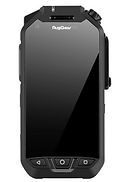Smartphone Annual Energy Consumption Top Ten Best Smartphones 2023 - 2024
Determining the amount of energy consumed by a smartphone in a year can be difficult due to several factors, such as the type of smartphone, battery capacity, usage patterns, and charging habits.
To address this problem, ViserMark has introduced the Annual Energy Consumption Label, which measures energy consumption in kWh. This label provides an objective benchmark across all devices, allowing consumers to compare different smartphones' expected annual electricity consumption.
This is the first time such a label has been introduced, making it easier for consumers to identify energy-efficient smartphones.
See our Top Ten List of the Best Smartphones for Annual Energy Consumption.
As an Amazon Associate, we may earn commissions from qualifying purchases from Amazon.com.
You can learn more about our disclosure policy here.
More Smartphone Ratings
The energy consumption during the charging process primarily depends on the charger's efficiency and battery capacity. Typically, smartphone chargers have an efficiency of around 70-90%.
Also, the energy consumption during active usage varies based on the tasks performed, screen brightness, app usage, and connectivity. Activities like gaming, video streaming, or using power-intensive apps may consume more energy than lighter tasks like texting or browsing web pages. Higher screen brightness settings also require more power.
Individual usage patterns and habits greatly influence energy consumption. For instance, frequent use of power-intensive apps, heavy gaming, or prolonged video streaming can drain the battery faster, resulting in higher energy consumption. Conversely, conservative usage and enabling power-saving features can reduce energy consumption.
FIND OUT MORE








































